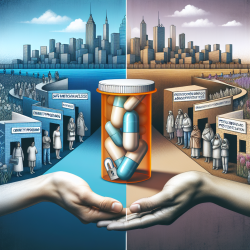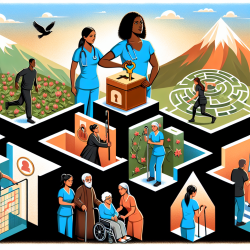Introduction
The dual challenge of ensuring safe access to medications for palliative care while preventing prescription drug abuse is a pressing issue, particularly in American inner cities, rural areas, and communities overwhelmed by addiction. The research article titled "Ensuring safe access to medication for palliative care while preventing prescription drug abuse: innovations for American inner cities, rural areas, and communities overwhelmed by addiction" provides valuable insights into innovative community-oriented programs that can address these challenges.
Key Innovations and Their Implications
The research highlights several innovative strategies that can be implemented to improve medication access and prevent abuse:
- Safe Medication Dispensing Centers: Establishing centers in existing retail pharmacies and traveling clinics, guarded by police officers, to ensure safe dispensing and storage of controlled substances.
- Community Collaboration: Involving pharmacists, police, medical providers, and social workers in planning and monitoring medication storage and distribution.
- Medication Purchasing Cooperatives: Developing cooperatives to reduce costs and improve access to medications, including tamper-resistant formulations.
- Methadone Maintenance Treatment Programs (MMTPs): Expanding the role of MMTPs in palliative care to provide safer access to opioid medications for pain management.
Implementing Research Findings in Practice
Practitioners can enhance their skills and improve patient outcomes by implementing these research findings. Here are some actionable steps:
- Collaborate with Local Authorities: Work with local police and community leaders to establish safe medication dispensing centers.
- Engage with Community Networks: Leverage existing social networks and community agencies to support patient monitoring and medication adherence.
- Advocate for Policy Changes: Encourage policymakers to support innovative programs and funding for safe medication access and abuse prevention.
Encouraging Further Research
While the research provides a robust framework, further studies are needed to evaluate the effectiveness of these programs in diverse settings. Practitioners are encouraged to participate in research efforts to gather data and refine these strategies.
Conclusion
By integrating these innovative approaches, practitioners can play a crucial role in ensuring safe medication access while preventing prescription drug abuse. These efforts will contribute to better health outcomes for patients, particularly in underserved communities.
To read the original research paper, please follow this link: Ensuring safe access to medication for palliative care while preventing prescription drug abuse: innovations for American inner cities, rural areas, and communities overwhelmed by addiction.










